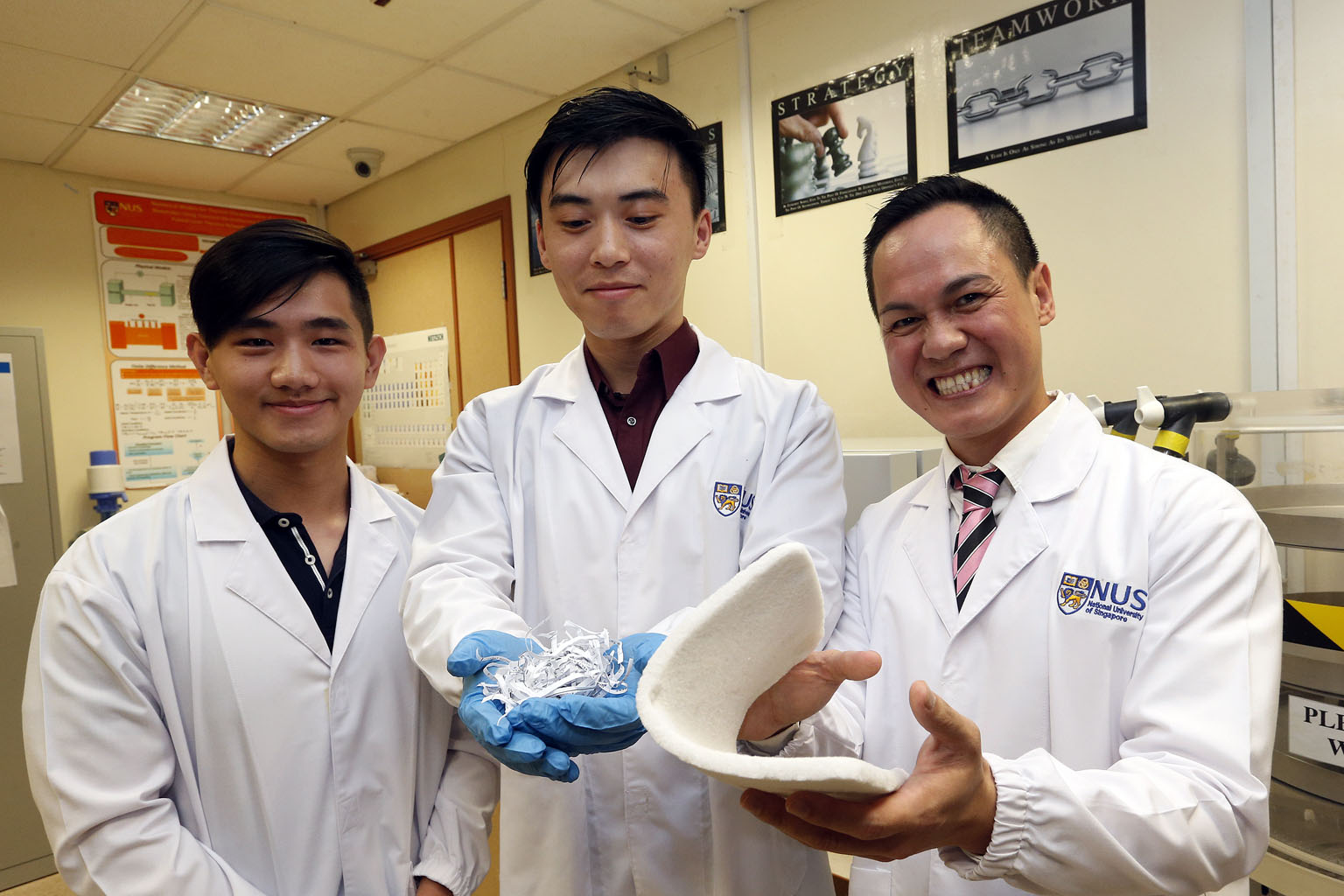From paper waste to powerful absorbent
NUS team's product is 4 times more absorbent than current ones used for oil spills
Sign up now: Get ST's newsletters delivered to your inbox

The NUS team led by Dr Duong (right) has converted paper waste into a novel material that could be used for oil spill clean-ups, heat insulation and packaging. The material will hit the market in May. With Dr Duong are (from left) mechanical engineering students Siah Jie Yang, 23, and Bowen Gu, 25.
ST PHOTO: CHEW SENG KIM
Samantha Boh
Follow topic:
Researchers from the National University of Singapore (NUS) have developed a new material from paper waste that could one day be used to clean up devastating oil spills.
The product, which is set to hit the market in May, is said to be capable of absorbing oil to up to 90 per cent of its weight when dry. Tests in the laboratory found that this makes it four times more absorbent than materials currently used.
Assistant Professor Duong Hai Minh from the NUS department of mechanical engineering, who led the development of the material, said absorbent materials made of polypropylene - a synthetic resin - are now commonly used to clean up oil spills. But their absorption capabilities are low and slow, and they are also non-biodegradable.
The material his team has developed, however, is created from cellulose fibres found in waste paper, which make it biodegradable and non-toxic.
Using a technique which involves adding water and a type of chemical to the cellulose, fragmenting its cells with sound waves, freezing it, dry freezing it and then leaving it to cure under heat, the cellulose fibres are converted into cellulose aerogels - an ultralight porous material. It is then coated with a chemical called Trimethoxy-methylsilane to make it water repellent but capable of absorbing oil.
"Our novel cellulose aerogels therefore serve as an attractive alternative to current methods of oil spill cleaning, which has a potential market size of US$143.5 billion (S$200 billion)," he said.
Dr Duong added that the fabrication process takes just three days, uses less energy and produces few pollutants.
The material could also be used as heat insulators, as packaging in place of bubble wrap, and as sponges to stop heavy bleeding in just seconds.
The technology was licensed to the company Bronxculture last November for commercialisation, and will be available in the United States, China, India and South-east Asia from May.
Professor Brian Wardle from the Massachusetts Institute of Technology, who specialises in research into nano-engineered composite materials, said: "The materials are themselves interesting, and the ability demonstrated to create the nanofibres from waste materials suggests this work will have great technological impact."

